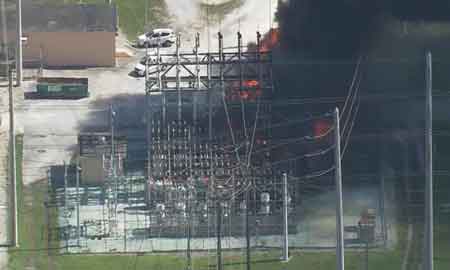Latest Electricity News - EV Infrastructure
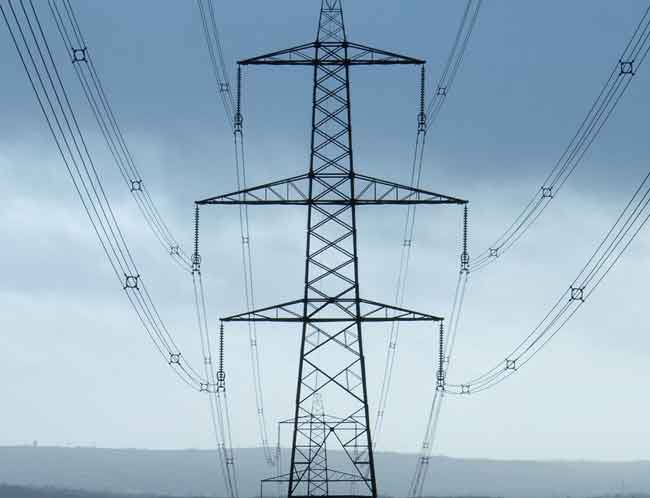
A New Electric Boat Club Launches in Seattle
Aurelia Boat Club delivers electric boat membership in Seattle, featuring zero-emission propulsion, quiet cruising, sustainable recreation, and a managed fleet with maintenance, insurance, moorage, and charging handled for members seeking hassle-free, eco-friendly boating.
Key Points
Aurelia Boat Club is a Seattle membership offering all-electric boats, with maintenance, insurance, and moorage included.
✅ Unlimited access to an all-electric fleet
✅ Maintenance, insurance, moorage, and charging included
✅ Quiet, zero-emission cruising on Seattle waters
Seattle's maritime scene has welcomed a new player: Aurelia Boat Club. Founded by former Pure Watercraft employees, Aurelia is poised to redefine electric boating in the city, where initiatives like Washington State Ferries hybrid-electric upgrade are underway. The club's inception follows the unexpected closure of Pure Watercraft, a Seattle-based startup that aimed to revolutionize the pleasure boating industry before its financial troubles led to its downfall.
From Pure Watercraft to Aurelia Boat Club
Pure Watercraft, established in 2011, garnered attention for its innovative electric propulsion systems designed to replace traditional gas-powered motors in boats, while efforts to build the first commercial electric speedboats also advanced. The company attracted significant investment, including a notable partnership with General Motors in 2021, which acquired a 25% stake in Pure Watercraft. Despite these efforts, Pure Watercraft faced financial difficulties and entered receivership in 2024, leading to the liquidation of its assets.
Amidst this transition, Danylo Kurgan and Mrugesh Desai saw an opportunity to continue the vision of electric boating. Kurgan, formerly a financial analyst at Pure Watercraft and involved in the company's boat club operations, teamed up with Desai, a technology executive and startup investor. Together, they acquired key assets from Pure Watercraft's receivership, including electric outboard motors, pontoon boats, inflatable crafts, battery systems, spare parts, and digital infrastructure.
Aurelia Boat Club's Offerings
Aurelia Boat Club aims to provide a sustainable and accessible alternative to traditional gas-powered boat clubs in Seattle. Members can enjoy unlimited access to a fleet of all-electric boats without the responsibilities of ownership. The club's boats are equipped with electric motors, offering a quiet and environmentally friendly boating experience, similar to how electric ships are clearing the air on the B.C. coast. Additionally, Aurelia handles maintenance, repairs, insurance, and moorage, allowing members to focus solely on enjoying their time on the water.
The Future of Electric Boating in Seattle
Aurelia Boat Club's launch signifies a growing interest in sustainable boating practices in Seattle. The club's founders are committed to scaling the business and expanding their fleet to meet the increasing demand for eco-friendly recreational activities, as projects like battery-electric high-speed ferries indicate. By leveraging the assets and knowledge gained from Pure Watercraft, Aurelia aims to continue the legacy of innovation in the electric boating industry.
As the boating community becomes more environmentally conscious, initiatives like Aurelia Boat Club play a crucial role in promoting sustainable practices, and examples such as Harbour Air's electric aircraft highlight the momentum. The club's success could serve as a model for other cities, demonstrating that with the right vision and resources, the transition to electric boating is not only feasible but also desirable.
While the closure of Pure Watercraft marked the end of one chapter, it also paved the way for new ventures like Aurelia Boat Club to carry forward the mission of transforming the boating industry, with regional moves like the Kootenay Lake electric-ready ferry and international innovations such as Berlin electric flying ferry showing what's possible. With a strong foundation and a clear vision, Aurelia is set to make significant waves in Seattle's electric boating scene.
Related News
Sign Up for Electricity Forum’s News Service
Weekly updates from our FREE News Service—get the latest news, breakthrough technologies, and expert insights, delivered straight to your inbox.
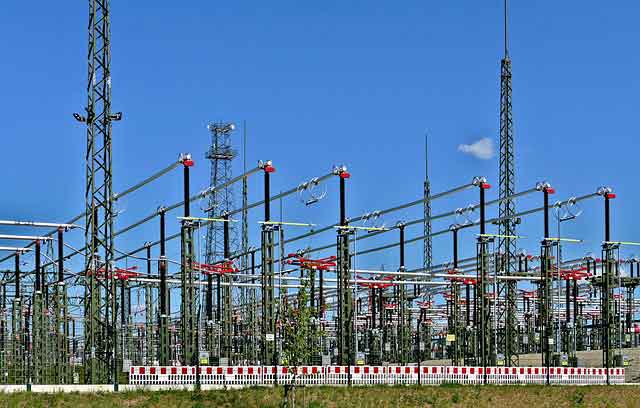
Wartsila to Power USA’s First Battery-Electric High-Speed Ferries
San Francisco Battery-Electric Ferries will deliver zero-emission, high-speed passenger service powered by Wartsila electric propulsion, EPMS, IAS, batteries, and shore power, advancing maritime decarbonization under the REEF program and USCG Subchapter T standards.
Key Points
They are the first US zero-emission high-speed passenger ferries using integrated electric propulsion and shore power
✅ Dual 625 kW motors enable up to 24-knot service speeds
✅ EPMS, IAS, DC hub, and shore power streamline operations
✅ Built to USCG Subchapter T for safety and compliance
Wartsila, a global leader in sustainable marine technology, has been selected to supply the electric propulsion system for the United States' first fully battery-electric, zero-emission high-speed passenger ferries. This significant development marks a pivotal step in the decarbonization of maritime transport, aligning with California's ambitious environmental goals, including recent clean-transport investments across ports and corridors.
A Leap Toward Sustainable Maritime Transport
The project, commissioned by All American Marine (AAM) on behalf of San Francisco Bay Ferry, involves the construction of three 150-passenger ferries, reflecting broader U.S. advances like the Washington State Ferries hybrid upgrade now underway. These vessels will operate on new routes connecting the rapidly developing neighborhoods of Treasure Island and Mission Bay to downtown San Francisco. The ferries are part of the Rapid Electric Emission Free (REEF) Ferry Program, a comprehensive initiative by San Francisco Bay Ferry to transition its fleet to zero-emission propulsion technology. The first vessel is expected to join the fleet in early 2027.
Wärtsilä’s Role in the Project
Wärtsilä's involvement encompasses the supply of a comprehensive electric propulsion system, including the Energy and Power Management System (EPMS), integrated automation system (IAS), batteries, DC hub, transformers, electric motors, and shore power supply. This extensive scope underscores Wärtsilä’s expertise in providing integrated solutions for emission-free marine transportation. The company's extensive global experience in developing and supplying integrated systems and solutions for zero-emission high-speed vessels, as seen with electric ships on the B.C. coast operating today, was a key consideration in the selection process.
Technical Specifications of the Ferries
The ferries will be 100 feet (approximately 30 meters) in length, with a beam of 26 feet and a draft of 5.9 feet. Each vessel will be powered by dual 625-kilowatt electric motors, enabling them to achieve speeds of up to 24 knots. The vessels will be built to U.S. Coast Guard Subchapter T standards, ensuring compliance with stringent safety regulations.
Environmental and Operational Benefits
The transition to battery-electric propulsion offers numerous environmental and operational advantages. Electric ferries produce zero emissions during operation, as demonstrated by Berlin's electric ferry deployments, significantly reducing the carbon footprint of maritime transport. Additionally, electric propulsion systems are generally more efficient and require less maintenance compared to traditional diesel engines, leading to lower operational costs over the vessel's lifespan.
Broader Implications for Maritime Decarbonization
This project is part of a broader movement toward sustainable maritime transport in the United States. San Francisco Bay Ferry has also approved the purchase of two larger 400-passenger battery-electric ferries for transbay routes, further expanding its commitment to zero-emission operations. The agency has secured approximately $200 million in funding from local, state, and federal sources, echoing infrastructure bank support seen in B.C., to support these initiatives, including vessel construction and terminal electrification.
Wartsila’s involvement in this project highlights the company's leadership in the maritime industry's transition to sustainable energy solutions, including hybrid-electric pathways like BC Ferries' new hybrids now in service. With a proven track record in supplying integrated systems for zero-emission vessels, Wärtsilä is well-positioned to support the global shift toward decarbonized maritime transport.
As the first fully battery-electric high-speed passenger ferries in the United States, these vessels represent a significant milestone in the journey toward sustainable and environmentally responsible maritime transportation, paralleling regional advances such as the Kootenay Lake electric-ready ferry entering service. The collaboration between Wärtsilä, All American Marine, and San Francisco Bay Ferry exemplifies the collective effort required to realize a zero-emission future for the maritime industry.
The deployment of these battery-electric ferries in San Francisco Bay not only advances the city's environmental objectives but also sets a precedent for other regions to follow. With continued innovation and collaboration, the maritime industry can look forward to a future where sustainable practices are the standard, not the exception.
Related News
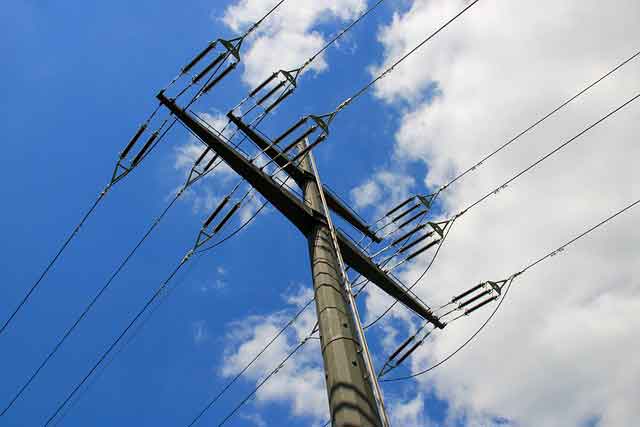
TCA Electric Leads Hydrogen Crane Project at Vancouver Port
Hydrogen Fuel Cell Crane Port of Vancouver showcases zero-emission RTG technology by DP World, TCA Electric, and partners, using hydrogen-electric fuel cells, battery energy storage, and regenerative capture to decarbonize container handling operations.
Key Points
A retrofitted RTG crane powered by hydrogen fuel cells, batteries, and regeneration to cut diesel use and CO2 emissions.
✅ Dual fuel cell system charges high-voltage battery
✅ Regenerative capture reduces energy demand and cost
✅ Pilot targets zero-emission RTG fleets by 2040
In a groundbreaking move toward sustainable logistics, TCA Electric, a Chilliwack-based industrial electrical contractor, is at the forefront of a pioneering hydrogen fuel cell crane project at the Port of Vancouver. This initiative, led by DP World in collaboration with TCA Electric and other partners, marks a significant step in decarbonizing port operations and showcases the potential of hydrogen technology in heavy-duty industrial applications.
A Vision for Zero-Emission Ports
The Port of Vancouver, Canada's largest port, has long been a hub for international trade. However, its operations have also contributed to substantial greenhouse gas emissions, even as DP World advances an all-electric berth in the U.K., primarily from diesel-powered Rubber-Tired Gantry (RTG) cranes. These cranes are essential for container handling but are significant sources of CO₂ emissions. At DP World’s Vancouver terminal, 19 RTG cranes account for 50% of diesel consumption and generate over 4,200 tonnes of CO₂ annually.
To address this, the Vancouver Fraser Port Authority and the Province of British Columbia have committed to transforming the port into a zero-emission facility by 2050, supported by provincial hydrogen investments that accelerate clean energy infrastructure across B.C. This ambitious goal has spurred several innovative projects, including the hydrogen fuel cell crane pilot.
TCA Electric’s Role in the Hydrogen Revolution
TCA Electric's involvement in this project underscores its expertise in industrial electrification and commitment to sustainable energy solutions. The company has been instrumental in designing and implementing the electrical systems that power the hydrogen fuel cell crane. This includes integrating the Hydrogen-Electric Generator (HEG), battery energy storage system, and regenerative energy capture technologies. The crane operates using compressed gaseous hydrogen stored in 15 pressurized tanks, which feed a dual fuel cell system developed by TYCROP Manufacturing and H2 Portable. This system charges a high-voltage battery that powers the crane's electric drive, significantly reducing its carbon footprint.
The collaboration between TCA Electric, TYCROP, H2 Portable, and HTEC represents a convergence of local expertise and innovation. These companies, all based in British Columbia, have leveraged their collective knowledge to develop a world-first solution in the industrial sector, while regional pioneers like Harbour Air's electric aircraft illustrate parallel progress in aviation. TCA Electric's leadership in this project highlights its role as a key enabler of the province's clean energy transition.
Demonstrating Real-World Impact
The pilot project began in October 2023 with the retrofitting of a diesel-powered RTG crane. The first phase included integrating the hydrogen-electric system, followed by a one-year field trial to assess performance metrics such as hydrogen consumption, energy generation, and regenerative energy capture rates. Early results have been promising, with the crane operating efficiently and emitting only steam, compared to the 400 kilograms of CO₂ produced by a comparable diesel unit.
If successful, this project could serve as a model for decarbonizing port operations worldwide, mirroring investments in electric trucks at California ports that target landside emissions. DP World plans to consider converting its fleet of RTG cranes in Vancouver and Prince Rupert to hydrogen power, aligning with its global commitment to achieve carbon neutrality by 2040.
Broader Implications for the Industry
The success of the hydrogen fuel cell crane pilot at the Port of Vancouver has broader implications for the shipping and logistics industry. It demonstrates the feasibility of transitioning from diesel to hydrogen-powered equipment in challenging environments, and aligns with advances in electric ships on the B.C. coast. The project's success could accelerate the adoption of hydrogen technology in other ports and industries, contributing to global efforts to reduce carbon emissions and combat climate change.
Moreover, the collaboration between public and private sectors in this initiative sets a precedent for future partnerships aimed at advancing clean energy solutions. The support from the Province of British Columbia, coupled with the expertise of companies like TCA Electric and utility initiatives such as BC Hydro's vehicle-to-grid pilot underscore the importance of coordinated efforts in achieving sustainability goals.
Looking Ahead
As the field trial progresses, stakeholders are closely monitoring the performance of the hydrogen fuel cell crane. The data collected will inform decisions on scaling the technology and integrating it into broader port operations. The success of this project could pave the way for similar initiatives in other regions, complementing the province's move to electric ferries with CIB support, promoting the widespread adoption of hydrogen as a clean energy source in industrial applications.
TCA Electric's leadership in this project exemplifies the critical role of skilled industrial electricians in driving the transition to sustainable energy solutions. Their expertise ensures the safe and efficient implementation of complex systems, making them indispensable partners in the journey toward a zero-emission future.
The hydrogen fuel cell crane pilot at the Port of Vancouver represents a significant milestone in the decarbonization of port operations. Through innovative partnerships and local expertise, this project is setting the stage for a cleaner, more sustainable future in global trade and logistics.
Related News
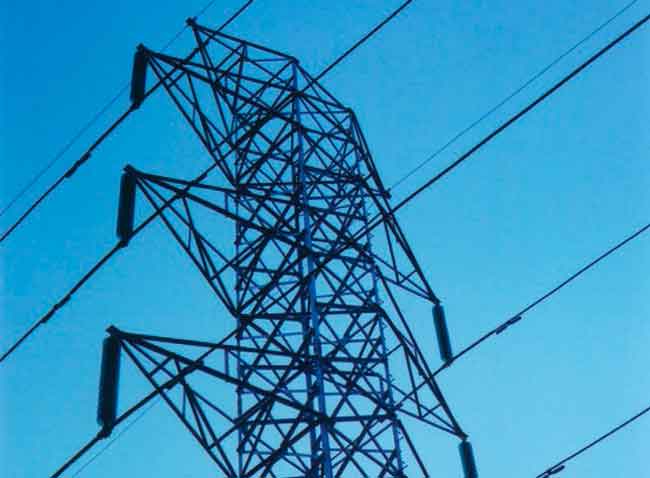
Reload.Land 2025: Berlin's Premier Electric Motorcycle Festival Returns
Reload.Land 2025 returns to Berlin with electric motorcycles, e-scooters, test rides, a conference on sustainability, custom builds, a silent ride, networking, innovators, brands, enthusiasts, and an electronic afterparty, spotlighting Europe's cutting-edge electromobility scene.
Key Points
Reload.Land 2025 is Berlin's electric motorcycle festival with test rides, panels, custom bikes, and a city silent ride.
✅ Test rides for electric motorcycles and e-scooters
✅ Conference on technology, sustainability, and policy
✅ Custom exhibition, Silent Ride, and electronic afterparty
Reload.Land, Europe's pioneering festival dedicated to electric motorcycles, is set to return for its third edition on June 7–8, 2025. Held at the Napoleon Komplex in Berlin, a city advancing sustainable mobility initiatives, this event promises to be a significant gathering for enthusiasts, innovators, and industry leaders in the realm of electric mobility.
A Hub for Electric Mobility Enthusiasts
Reload.Land serves as a platform for showcasing the latest advancements in electric two-wheelers, reflecting broader electricity innovation trends, including motorcycles, e-scooters, and custom electric bikes. Attendees will have the opportunity to test ride a diverse selection of electric vehicles from various manufacturers, providing firsthand experience of the evolving landscape of electromobility.
Highlights of the Festival
-
Custom Exhibition: A curated display of unique electric motorcycles and vehicles, highlighting the creativity and innovation within the electric mobility sector, from custom builders to Daimler's electrification plan shaping supply chains.
-
Reload.Land Conference: Engaging panel discussions and presentations from industry experts, focusing on topics such as cutting-edge technology, sustainability, including electricity demand from e-mobility projections, and the future of electric transportation.
-
Silent Ride: A group electric-only ride through the streets of Berlin, alongside projects like the city's electric flying ferry initiative, offering participants a unique experience of the city while promoting the quiet and clean nature of electric vehicles.
-
Official Afterparty: An evening celebration featuring electronic music, providing attendees with an opportunity to unwind and network in a vibrant atmosphere.
Community and Networking Opportunities
Reload.Land is not just an event; it's a movement that brings together a global community of riders, innovators, and brands. The festival fosters an environment where like-minded individuals can connect, share ideas, and collaborate on shaping the future of electric mobility, with similar gatherings like Everything Electric in Vancouver amplifying awareness worldwide.
Event Details
-
Dates: June 7–8, 2025
-
Location: Napoleon Komplex, Modersohnstraße 35–45, 10245 Berlin, Germany.
-
Entry Fee: €10 (Children up to 14 years free)
Reload.Land 2025 promises to be a landmark event in the electric mobility calendar, offering a comprehensive look at the innovations shaping the future of transportation, echoing the public enthusiasm seen at EV events in Regina this year. Whether you're a seasoned rider, an industry professional, or simply curious about electric vehicles, Reload.Land provides a unique opportunity to immerse yourself in the world of electric motorcycles.
Related News
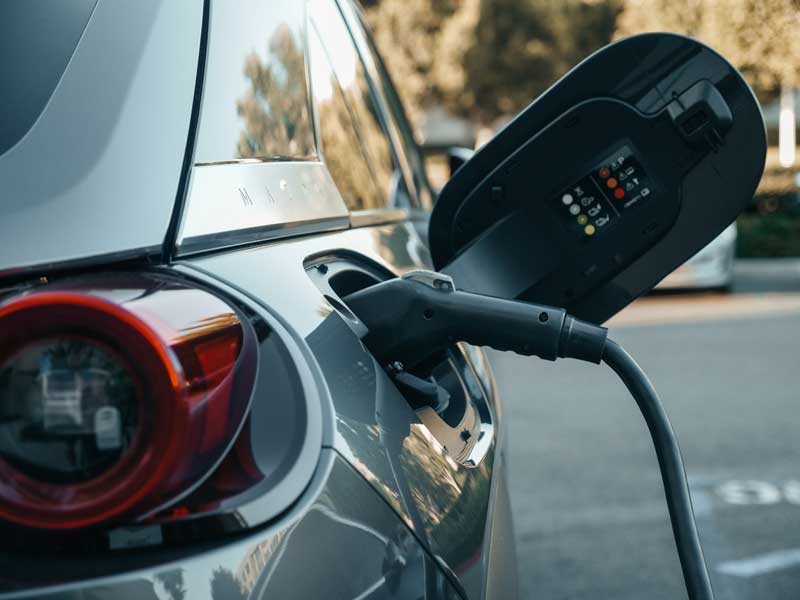
Miami Valley Expands EV Infrastructure with 24 New Chargers
Miami Valley EV Chargers Expansion strengthens Level 2 charging infrastructure across Dayton, with Ohio EPA funding and Volkswagen settlement support, easing range anxiety and promoting sustainable transportation at Austin Landing and high-traffic destinations.
Key Points
An Ohio initiative installing 24 Level 2 stations to boost EV adoption, reduce range anxiety, and expand access in Dayton.
✅ 24 new Level 2 chargers at high-traffic regional sites
✅ Ohio EPA and VW settlement funds support deployment
✅ Reduces range anxiety, advancing sustainable mobility
The Miami Valley region in Ohio is accelerating its transition to electric vehicles (EVs) with the installation of 24 new Level 2 EV chargers, funded through a $1.1 million project supported by the Ohio Environmental Protection Agency (EPA). This initiative aims to enhance EV accessibility and alleviate "range anxiety" among drivers as the broader U.S. EV boom tests grid readiness.
Strategic Locations Across the Region
The newly installed chargers are strategically located in high-traffic areas to maximize their utility as national charging networks compete to expand coverage across travel corridors. Notable sites include Austin Landing, the Dayton Art Institute, the Oregon District, Caesar Creek State Park, and the Rose Music Center. These locations were selected to ensure that EV drivers have convenient access to charging stations throughout the region, similar to how Ontario streamlines station build-outs to place chargers where drivers already travel.
Funding and Implementation
The project is part of Ohio's broader effort to expand EV infrastructure, reflecting the evolution of U.S. charging infrastructure while utilizing funds from the Volkswagen Clean Air Act settlement. The Ohio EPA awarded approximately $3.25 million statewide for the installation of Level 2 EV chargers, with the Miami Valley receiving a significant portion of this funding, while Michigan utility programs advance additional investments to scale regional infrastructure.
Impact on the Community
The expansion of EV charging infrastructure is expected to have several positive outcomes. It will provide greater convenience for current EV owners and encourage more residents to consider electric vehicles as a viable transportation option, including those in apartments and condos who benefit from expanded access. Additionally, the increased availability of charging stations supports the state's environmental goals by promoting the adoption of cleaner, more sustainable transportation.
Looking Ahead
As the adoption of electric vehicles continues to grow, the Miami Valley's investment in EV infrastructure positions the region as a leader in sustainable transportation as utilities pursue ambitious charging strategies to meet demand. The success of this project may serve as a model for other regions looking to expand their EV charging networks. This initiative reflects a significant step towards a more sustainable and accessible transportation future for the Miami Valley.
Related News

B.C.'s Green Energy Ambitions Face Power Supply Challenges
British Columbia Green Grid Constraints underscore BC Hydro's rising imports, peak demand, electrification, hydroelectric variability, and transmission bottlenecks, challenging renewable energy expansion, energy security, and CleanBC targets across industry and zero-emission transportation.
Key Points
They are capacity and supply limits straining B.C.'s clean electrification, driving imports and risking reliability.
✅ Record 25% imports in FY2024 raise emissions and costs
✅ Peak demand and transmission limits delay new connections
✅ Drought reduces hydro output; diversified generation needed
British Columbia's ambitious green energy initiatives are encountering significant hurdles due to a strained electrical grid and increasing demand, with a EV demand bottleneck adding pressure. The province's commitment to reducing carbon emissions and transitioning to renewable energy sources is being tested by the limitations of its current power infrastructure.
Rising Demand and Dwindling Supply
In recent years, B.C. has experienced a surge in electricity demand, driven by factors such as population growth, increased use of electric vehicles, and the electrification of industrial processes. However, the province's power supply has struggled to keep pace, and one study projects B.C. would need to at least double its power output to electrify all road vehicles. In fiscal year 2024, BC Hydro imported a record 13,600 gigawatt hours of electricity, accounting for 25% of the province's total consumption. This reliance on external sources, particularly from fossil-fuel-generated power in the U.S. and Alberta, raises concerns about energy security and sustainability.
Infrastructure Limitations
The current electrical grid is facing capacity constraints, especially during peak demand periods, and regional interties such as a proposed Yukon connection are being discussed to improve reliability. A report from the North American Electric Reliability Corporation highlighted that B.C. could be classified as an "at-risk" area for power generation as early as 2026. This assessment underscores the urgency of addressing infrastructure deficiencies to ensure a reliable and resilient energy supply.
Government Initiatives and Investments
In response to these challenges, the provincial government has outlined plans to expand the electrical system. Premier David Eby announced a 10-year, $36-billion investment to enhance the grid's capacity, including grid development and job creation measures to support local economies. The initiative focuses on increasing electrification, upgrading high-voltage transmission lines, refurbishing existing generating facilities, and expanding substations. These efforts aim to meet the growing demand and support the transition to clean energy sources.
The Role of Renewable Energy
Renewable energy sources, particularly hydroelectric power, play a central role in B.C.'s energy strategy. However, the province's reliance on hydroelectricity has its challenges. Drought conditions in recent years have led to reduced water levels in reservoirs, impacting the generation capacity of hydroelectric plants. This variability underscores the need for a diversified energy mix, with options like a hydrogen project complementing hydro, to ensure a stable and reliable power supply.
Balancing Environmental Goals and Energy Needs
B.C.'s commitment to environmental sustainability is evident in its policies, such as the CleanBC initiative, which aims to phase out natural gas heating in new homes by 2030 and achieve 100% zero-emission vehicle sales by 2035, supported by networks like B.C.'s Electric Highway that expand charging access. While these goals are commendable, they place additional pressure on the electrical grid. The increased demand from electric vehicles and electrified heating systems necessitates a corresponding expansion in power generation and distribution infrastructure.
British Columbia's green energy ambitions are commendable and align with global efforts to combat climate change. However, achieving these goals requires a robust and resilient electrical grid capable of meeting the increasing demand for power. The province's reliance on external power sources and the challenges posed by climate variability highlight the need for strategic investments in infrastructure and a diversified energy portfolio, guided by BC Hydro review recommendations to keep electricity affordable. By addressing these challenges proactively, B.C. can pave the way for a sustainable and secure energy future.
Related News

EV Fires Raise Health Concerns for Firefighters
EV Firefighter Cancer Risks: lithium-ion battery fires, toxic metals like nickel and chromium, hazardous smoke plumes, and prolonged exposure threaten first responders; SCBA use, decontamination, and evidence-based protocols help reduce occupational health impacts.
Key Points
Health hazards from EV battery fires exposing responders to toxic metals and smoke, elevating long-term cancer risk.
✅ Nickel and chromium in EV smoke linked to lung and sinus cancers
✅ Use SCBA, on-scene decon, and post-incident cleaning to cut exposure
✅ Adopt EV fire SOPs: cooling, monitoring, isolation, air monitoring
As electric vehicles (EVs) become more popular, the EV fire risks to firefighters are becoming an increasing concern. These fires, fueled by the high-capacity lithium-ion batteries in EVs, produce dangerous chemical exposures that could have serious long-term health implications for first responders.
Claudine Buzzo, a firefighter and cancer survivor, knows firsthand the dangers that come with the profession. She’s faced personal health battles, including rare pancreatic cancer and breast cancer, both of which she attributes to the hazards of firefighting. Now, as EV adoption increases and some research links adoption to fewer asthma-related ER visits in local communities, Buzzo and her colleagues are concerned about how EV fires might add to their already heavy exposure to harmful chemicals.
The fire risks associated with EVs are different from those of traditional gasoline-powered vehicles. Dr. Alberto Caban-Martinez, who is leading a study at the Sylvester Comprehensive Cancer Center, explains that the high concentrations of metals released in the smoke from an EV fire are linked to various cancers. For instance, nickel, a key component in EV batteries, is associated with lung, nasal, and laryngeal cancers, while chromium, another metal found in some EV batteries, is linked to lung and sinus cancers.
Research from the Firefighter Cancer Initiative indicates that the plume of smoke from an EV fire contains significantly higher concentrations of these metals than fires from traditional vehicles. This raises the risk of long-term health problems for firefighters who respond to such incidents.
While the Electric Vehicle Association acknowledges the risks associated with various types of vehicle fires, they maintain that the lithium-ion batteries in EVs may not present a significantly higher risk than other common fire hazards, even as broader assessments suggest EVs are not a silver bullet for climate goals. Nonetheless, the growing body of research is causing concern among health experts, urging for further studies into how these new types of fires could affect firefighter health and how upstream electricity generation, where 18% of electricity in 2019 came from fossil fuels in Canada, factors into overall risk perceptions.
Fire departments and health researchers are working to understand the full scope of these risks and are emphasizing the importance of protective gear, such as self-contained breathing apparatuses, to minimize exposure during EV fire responses, while also considering questions like grid impacts during charging operations and EV sustainability improvements in different regions.
Related News
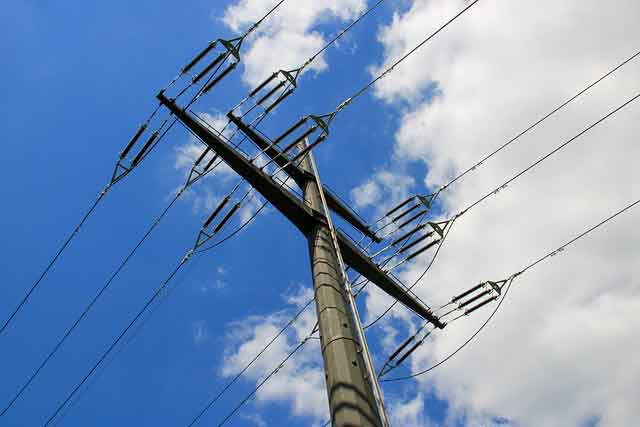
Energy Vault Secures $28M for California Green Hydrogen Microgrid
Calistoga Resiliency Centre Microgrid delivers grid resilience via green hydrogen and BESS, providing island-mode backup during PSPS events, wildfire risk, and outages, with black-start and grid-forming capabilities for reliable community power.
Key Points
A hybrid green hydrogen and BESS facility ensuring resilient, islanded power for Calistoga during PSPS and outages.
✅ 293 MWh capacity with 8.5 MW peak for critical backup
✅ Hybrid lithium-ion BESS plus green hydrogen fuel cells
✅ Island mode with black-start and grid-forming support
Energy Vault, a prominent energy storage and technology company known for its gravity storage, recently secured US$28 million in project financing for its innovative Calistoga Resiliency Centre (CRC) in California. This funding will enable the development of a microgrid powered by a unique combination of green hydrogen and battery energy storage systems (BESS), marking a significant step forward in enhancing grid resilience in the face of natural disasters such as wildfires.
Located in California's fire-prone regions, the CRC is designed to provide critical backup power during Public Safety Power Shutoff (PSPS) events—periods when utility companies proactively cut power to prevent wildfires. These events can leave communities without electricity for extended periods, making the need for reliable, independent power sources more urgent as many utilities see benefits in energy storage today. The CRC, with a capacity of 293 MWh and a peak output of 8.5 MW, will ensure that the Calistoga community maintains power even when the grid is disconnected.
The CRC features an integrated hybrid system that combines lithium-ion batteries and green hydrogen fuel cells, even as some grid-scale projects adopt vanadium flow batteries for long-duration needs. During a PSPS event or other grid outages, the system will operate in "island mode," using hydrogen to generate electricity. This setup not only guarantees power supply but also contributes to grid stability by supporting black-start and grid-forming functions. Energy Vault's proprietary B-VAULT DC battery technology complements the hydrogen fuel cells, enhancing the overall performance and resilience of the microgrid.
One of the key aspects of the CRC project is the utilization of green hydrogen. Unlike traditional hydrogen, which is often produced using fossil fuels, green hydrogen is generated through renewable energy sources like solar or wind power, with large-scale initiatives such as British Columbia hydrogen project accelerating supply, making it a cleaner and more sustainable alternative. This aligns with California’s ambitious clean energy goals and is expected to reduce the carbon footprint of the region’s energy infrastructure.
The CRC project also sets a precedent for future hybrid microgrid deployments across California and other wildfire-prone areas, with utilities like SDG&E Emerald Storage highlighting growing adoption. Energy Vault has positioned the CRC as a model for scalable, utility-scale microgrids that can be adapted to various locations facing similar challenges. Following the success of this project, Energy Vault is expanding its portfolio with additional projects in Texas, where it anticipates securing up to US$25 million in financing.
The funding for the CRC also includes the sale of an investment tax credit (ITC), a key component of the financing structure that helps make such ambitious projects financially viable. This structure is crucial as it allows companies to leverage government incentives to offset development costs, including CEC long-duration storage funding, thus encouraging further investment in green energy infrastructure.
Despite some skepticism regarding the transportation of hydrogen rather than producing it onsite, the project has garnered strong support. California’s Public Utilities Commission (CPUC) acknowledged the potential risks of transporting green hydrogen but emphasized that it is still preferable to using more harmful fuel sources. This recognition is important as it validates Energy Vault’s approach to using hydrogen as part of a broader strategy to transition to clean, reliable energy solutions.
Energy Vault's shift from its traditional gravity-based energy storage systems to battery energy storage systems, such as BESS in New York, reflects the company's adaptation to the growing demand for versatile, efficient energy solutions. The hybrid approach of combining BESS with green hydrogen represents an innovative way to address the challenges of energy storage, especially in regions vulnerable to natural disasters and power outages.
As the CRC nears mechanical completion and aims for full commercial operations by Q2 2025, it is poised to become a critical part of California’s grid resilience strategy. The microgrid's ability to function autonomously during emergencies will provide invaluable benefits not only to Calistoga but also to other communities that may face similar grid disruptions in the future.
Energy Vault’s US$28 million financing for the Calistoga Resiliency Centre marks a significant milestone in the development of hybrid microgrids that combine the power of green hydrogen and battery energy storage. This project exemplifies the future of energy resilience, showcasing a forward-thinking approach to mitigating the impact of natural disasters and ensuring a reliable, sustainable energy future for communities at risk. With its innovative use of renewable energy sources and cutting-edge technology, the CRC sets a strong example for future energy storage projects worldwide.
Related News
EF Partner Media
Related Articles From ET Magazine
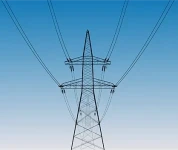
The Role of SCADA in Grid Monitoring and Control
As electric power systems grow in complexity, the need for real-time monitoring and control has never been greater. At the center of this transformation is SCADA—Supervisory Control and Data Acquisition—a system architecture that enables utilities to collect, process, and act on data from remote field devices. From high-voltage substations to distributed energy resources (DERs), SCADA platforms are the nerve center of modern grid operations.
SCADA systems provide utilities with critical operational visibility, allowing for effective grid management, improved reliability, and faster fault detection. As demand increases for automation, decentralized energy integration, and advanced analytics, SCADA’s role continues to expand well beyond its traditional boundaries.
SCADA Architecture: Core Components and Functions
The basic architecture of a SCADA system consists of three primary layers: field devices, communication infrastructure, and the central control system. Together, these layers enable seamless remote monitoring and control of electrical assets across wide geographic areas.
Field Devices: These include Remote Terminal Units
(RTUs) and Programmable Logic Controllers (PLCs) installed at substations, transformers, and switchgear. They interface with physical equipment and sensors to collect real-time data.
Communication Layer: Data is transmitted using telemetry protocols such as DNP3, Modbus, or IEC 60870-5-104 over Ethernet, fiber optics, or radio networks.
SCADA Control Center: A central Human-Machine Interface (HMI) displays data to operators and allows manual or automatic commands to be issued. This interface connects with historian databases, alarm systems, and control logic modules.
SCADA enables grid operators to supervise power flows, manage voltage levels, and respond to equipment failures in near real-time—essential capabilities for ensuring grid stability and minimizing downtime.
SCADA vs DMS vs EMS: Understanding the Differences
While SCADA forms the backbone of real-time operations, it’s often confused with other grid management systems like DMS (Distribution Management System) and EMS (Energy Management System). Each plays a distinct role in utility operations.
SCADA focuses on data acquisition and supervisory control. It provides real-time visibility into field equipment status and telemetry.
DMS builds on SCADA by adding distribution automation, outage management, volt/VAR control, and fault location isolation and service restoration (FLISR) capabilities. It is tailored for the medium- and low-voltage distribution grid.
EMS operates at the transmission level, optimizing power generation, load forecasting, unit commitment, and economic dispatch. EMS integrates market operations and power flow analysis into the control strategy.
In many utilities, these systems are integrated into a unified control platform to provide comprehensive situational awareness and efficient grid operations from generation to distribution.
Integrating DERs into SCADA Systems
As distributed energy resources (DERs)—such as rooftop solar, wind turbines, and battery storage—proliferate, SCADA systems must evolve to manage bi-directional power flows and maintain power quality.
Modern SCADA platforms are increasingly integrated with DER Management Systems (DERMS), enabling operators to:
- Monitor generation from behind-the-meter assets
- Control inverter settings for voltage regulation
- Coordinate dispatch with grid demands
- Ensure grid synchronization and stability
To achieve this, SCADA must support open protocols, real-time communication, and dynamic data modeling to accommodate the variability and intermittency of DERs. This shift is essential for grid modernization and the transition to a decentralized energy ecosystem.
Read the full article at:
https://online.electricity-today.com/electricity-today/q2-2025/

Cybersecurity in Substation and Grid Communications
As power systems become increasingly digitized and connected, the importance of cybersecurity in substation and grid communications has grown exponentially. With the integration of intelligent electronic devices (IEDs), SCADA systems, and remote monitoring, modern substations are now part of a broader cyber-physical infrastructure. While these technologies enable real-time control and improved reliability, they also expose utilities to cyber threats that can disrupt critical services and damage essential assets.
Ensuring the cybersecurity of substation networks is no longer optional—it’s a core requirement for grid stability, national security, and compliance with regulatory standards such as NERC CIP (North American Electric Reliability Corporation Critical Infrastructure Protection).
The Cyber Threat Landscape for Electric Utilities
Substations were once isolated, but the shift to remote access, IoT sensors, and cloud-connected platforms has expanded the attack surface dramatically. Today’s threats include malware, ransomware, insider threats, and state-sponsored attacks targeting the operational technology (OT) layer.
Because substations form the backbone of the transmission and distribution (T&D) network, any cyber incident can lead to blackouts, equipment failures, or cascading effects across the grid. Moreover, attackers often seek to exploit legacy devices, poor segmentation, or insecure remote connections to move laterally within the system.
NERC CIP Compliance: A Baseline for Protection
To address these growing risks, regulatory frameworks like NERC CIP have been developed to enforce a minimum standard of protection for critical infrastructure. NERC CIP governs the cybersecurity of bulk electric system assets across the U.S. and parts of Canada.
NERC CIP requires utilities to:
- Identify and categorize critical cyber assets
- Implement access control and authentication protocols
- Maintain audit trails and perform log analysis
- Conduct vulnerability assessments and incident response planning
Ensure physical and cyber perimeter security
Although NERC CIP provides a strong compliance foundation, it must be supplemented by real-time, adaptive defenses to address evolving threats and zero-day vulnerabilities.
Real-Time Threat Detection and Network Monitoring
Modern substations must go beyond static defenses and implement real-time threat detection capabilities. This includes the deployment of intrusion detection systems (IDS), network security monitoring (NSM) tools, and behavioral analytics platforms tailored for industrial control systems (ICS).
These tools enable operators to:
- Monitor communication patterns between IEDs, RTUs, and SCADA components
- Detect anomalies such as unexpected protocol usage or lateral movement
- Set automated alerts for known attack signatures or abnormal traffic volumes
- Analyze network flows in segmented OT zones
- Enhanced network visibility is critical, particularly when dealing with IEC 61850 protocols and other substation-specific communications that differ from traditional IT systems.
In addition, time-stamped logging, centralized SIEM integration, and forensic capabilities allow security teams to trace and respond to incidents rapidly, minimizing downtime and reducing impact.
Read the full article at:
https://online.electricity-today.com/electricity-today/q2-2025/

Understanding the IEC 61850 Protocol in Substation Automation
https://online.electricity-today.com/electricity-today/q2-2025/

Understanding the IEC 61850 Protocol in Substation Automation
Electricity Today T&D Magazine Subscribe for FREE

- Timely insights from industry experts
- Practical solutions T&D engineers
- Free access to every issue
EF T&D Live Online Forums
Register for our FREE T&D Live Online Forums and join our live expert-led webinars on the latest electrical industry topics.- Industry expert insights on trending technologies
- Free access to recorded webinar presentations
- Downloadable PDF presentations
- Convenient viewing on your schedule—no attendance required






